Ditapis dengan
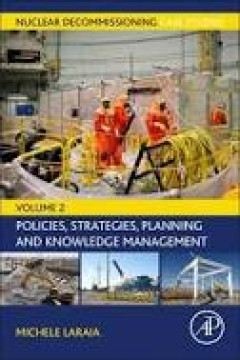
Nuclear Decommissioning Case Studies Policies, Strategies, Planning and Knowl…
Nuclear Decommissioning Case Studies: Policies, Strategies, Planning and Knowledge Management focuses on policy, strategy, planning and knowledge management in nuclear decommissioning, offering readers guidance on events that occur in early stages of the lifecycle. The book helps readers plan in advance to avoid and reduce schedule delays and cost overruns to ensure a smooth, safe and successfu…
- Edisi
- -
- ISBN/ISSN
- 978-0-323-85734-5
- Deskripsi Fisik
- xxiv, 347p.:illus.;24 cm
- Judul Seri
- -
- No. Panggil
- 621.483 LAR N
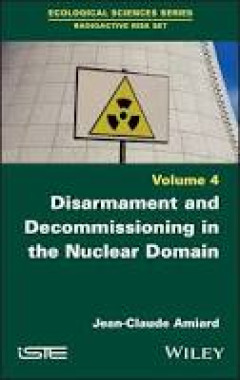
Disarmament and Decommissioning in the Nuclear Domain Volume 4
Following the acquisition of the atomic bomb by five states, the United Nations began drafting several treaties to limit nuclear proliferation. These efforts failed, as four more states also acquired nuclear weapons. In a similar vein, an attempt to limit atomic weapons - primarily within the two superpowers - was initiated. While the number of weapons has decreased, the new bombs now being ma…
- Edisi
- -
- ISBN/ISSN
- 978-1-78630-721-7
- Deskripsi Fisik
- x,334p.:illus.;24cm.
- Judul Seri
- -
- No. Panggil
- 621.483 CLA D
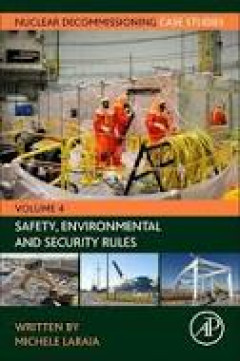
Nuclear Decommissioning Case Studies Safety, Environmental And Security Rules…
Nuclear Decommissioning Case Studies: Safety, Environmental and Security Rules, Volume Four in Michele Laraia’s series that presents a selection of global case studies on different aspects of Nuclear Decommissioning, focuses on the people side, including public perception, public relations and human factors. The book presents a selection of case studies on stakeholders, socioeconomics and mor…
- Edisi
- -
- ISBN/ISSN
- 978-0-323-91847-3
- Deskripsi Fisik
- xxxi, 341p.:illus.;24 cm
- Judul Seri
- -
- No. Panggil
- 621.483 LAR N
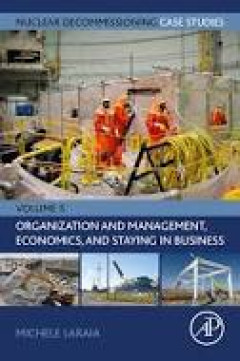
Nuclear Decommissioning Case Studies Organization and Management, Economics, …
Nuclear Decommissioning Case Studies: Organization and Management, Economics, Staying in Business, Volume Five delivers the latest volume in Michele Laraia's series, which presents a selection of global case studies on different aspects of nuclear decommissioning. This volume focuses on socioeconomics and performance indicators, offering guidance on project management, staffing, costs, and fund…
- Edisi
- -
- ISBN/ISSN
- 978-0-323-91847-3
- Deskripsi Fisik
- xxix, 431p.:illus.;24 cm.
- Judul Seri
- -
- No. Panggil
- 621.483 LAR N
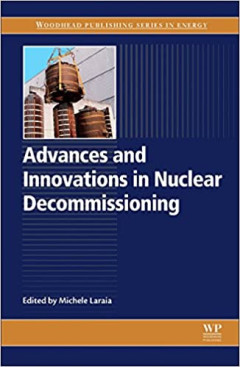
Advances and Innovations in Nuclear Decommissioning, 1st Edition
Advances and Innovations in Nuclear Decommissioning is an essential resource for industry professionals and academics interested in acquiring the most up-to-date information on the current state of nuclear decommissioning. Written and edited by the world’s leading experts, this book considers lessons learned and new innovations in the field. Edited by Dr. Laraia, it is the perfect companion t…
- Edisi
- -
- ISBN/ISSN
- 9780081011225
- Deskripsi Fisik
- 400 p. : illus. ; 23,5 cm
- Judul Seri
- Woodhead Publishing Series in Energy
- No. Panggil
- 621.483 LAR A
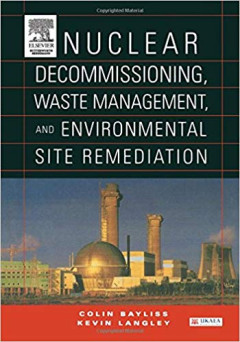
Nuclear Decommissioning, Waste Management, and Environmental Site Remediation…
This book discusses about nuclear decommissioning, radioactive waste management and also how to keep the environment safe. The topic of discussion is divided into 24 chapters covering decontamination techniques, costs and policies related to nuclear reactor decommissioning, radioactive waste management strategies, and designing a framework for environmental restoration (MM).
- Edisi
- 1
- ISBN/ISSN
- 978-0750677448
- Deskripsi Fisik
- xix,330 p, illus; 26,5 x 16,5cm
- Judul Seri
- -
- No. Panggil
- 621.83

Nuclear Decommissioning 1st Edition: Planning, Execution and International Ex…
Once a nuclear installation has reached the end of its safe and economical operational lifetime, the need for its decommissioning arises. Different strategies can be employed for nuclear decommissioning, based on the evaluation of particular hazards and their attendant risks, as well as on the analysis of costs of clean-up and waste management. This allows for decommissioning either soon after …
- Edisi
- 1
- ISBN/ISSN
- 9780857091154
- Deskripsi Fisik
- xxx, 824 p. : illus. ; 24,5 cm
- Judul Seri
- -
- No. Panggil
- 621.483 LAR N
 Karya Umum
Karya Umum  Filsafat
Filsafat  Agama
Agama  Ilmu-ilmu Sosial
Ilmu-ilmu Sosial  Bahasa
Bahasa  Ilmu-ilmu Murni
Ilmu-ilmu Murni  Ilmu-ilmu Terapan
Ilmu-ilmu Terapan  Kesenian, Hiburan, dan Olahraga
Kesenian, Hiburan, dan Olahraga  Kesusastraan
Kesusastraan  Geografi dan Sejarah
Geografi dan Sejarah